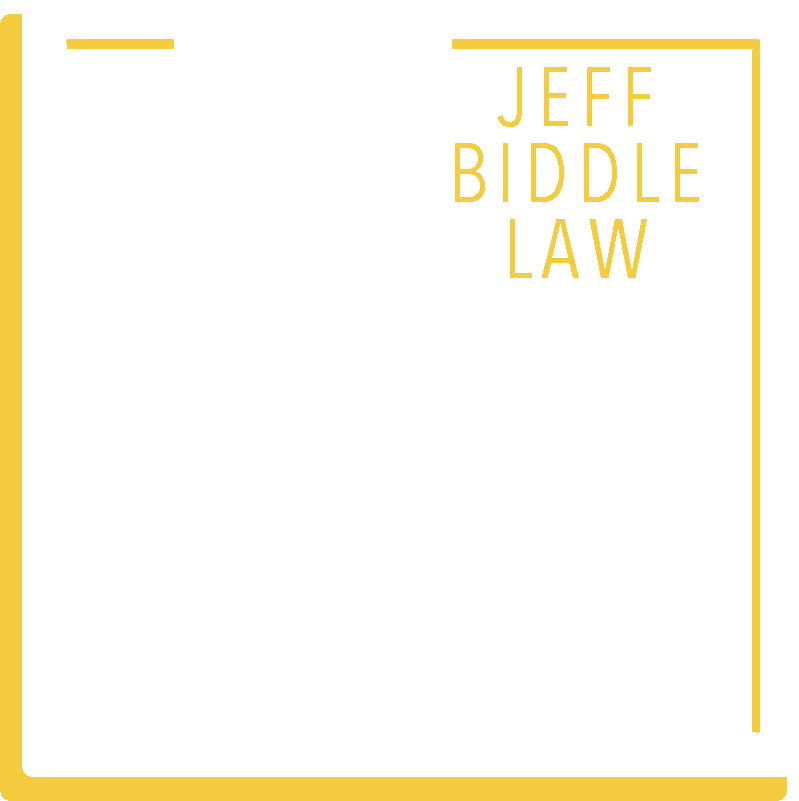Blog
Biddle Law
How do I file for bankruptcy? What’s the difference between a Chapter 7 and Chapter 13 bankruptcy? What if I can’t afford it?
If you have questions about the bankruptcy process, we’ve got the answers. Check back regularly for news and updates in the ever-thrilling world of bankruptcy law.

Okay, so I may just look like a pretty face to you, but trustees can be just like me; hiding and watching and looking for the opportunity to pounce. While I prefer to pounce on bugs, mice and birds, the trustee’s favorite prey is dimes, quarters and dollars and the bigger the prey, the better…for them. I’m not about getting into a brawl with a bear but, if you are a bear, don’t mess around with me and find out. So, I wrote this guide to hopefully answer questions that you might have about lawsuits and bankruptcy. IN A WRECK AND NEED A CHECK? We’ve all heard the commercials but, realistically, if you bring a lawsuit or have the right to bring one against someone for a personal injury case, that's considered an asset during your bankruptcy case. That is true for ALL LAWSUITS. Just like many other assets, judgments are not protected by a bankruptcy exemption . Therefore, any award recovered can be used to pay off your creditors as part of your bankruptcy case. If there is money left over after everyone has been paid off, though, you’ll get a refund from the trustee.
A Bankruptcy Lawyer from Chandler, AZ Can Help You Make Strategic Decisions
Sit Down With a Bankruptcy Lawyer in Chandler, AZ to Discuss Your Options
For a lot of people, Covid-19 or other issues may have caused you to fall behind in your mortgage payments. Perhaps the mortgage company allowed you to miss a few payments and now they are asking you to catch up and they’ve demanded a large catch-up payment. For whatever reason you may have, a Chapter 13 bankruptcy may be able to allow you to catch up on those missed payments and spread them out over a period of 36 to 60 months. Losing your house in 2021 would be devastating. First, there is the cost of relocation. Then, you’ll be shocked at the cost of rental in 2021. Whether you’re in Chandler, Gilbert, Scottsdale, Phoenix, Mesa, Tempe, Peoria, Goodyear, Litchfield Park, or anywhere else in Maricopa County or beyond, the rents have skyrocketed as much as the costs of houses. If you’re behind and need a Chapter 13 to help you keep your house, here is how that works: Upon filing a Chapter 13, you would stop paying the mortgage directly to your mortgage company or mortgage servicer and, instead, you would make a payment to the Chapter 13 Trustee, instead. The first payment is due 30 days after you file your case. The mortgage company will then file a claim in your bankruptcy case indicating what the current payment is and how much you are behind on your mortgage. The amount that you are behind is called “arrears.” I often hear people call it “in the rears,” though, and it makes me secretly snicker. They may also file what is called a “Notice of Post-Petition Mortgage Costs and Fees” and THIS is really where they get you in the rears because these expenses are an absolute joke. Sadly, we are stuck with these stupid fees and they are usually $600-1,200 for reviewing the Plan, filing a claim and basically picking their nose. Once these are filed, this is how the claims are classified and paid. First, the plan will propose that the mortgage is paid through the trustee and he adds his 10% trustee fee. Therefore, a $2,000 mortgage payment would become $2,200. The arrears and the post-petition fees are classified as secured claims and get paid without interest over the duration of your plan. If you have $6,000 in arrears and post-petition fees, that adds about $100 to your plan payment. Obviously there are a lot of other factors that go into determining what your plan payment will be like your disposable income and other claims that are required to be paid (taxes, car payments, attorney fees) but this is a simplified explanation of how a Chapter 13 can help you save your house from foreclosure.
I’m on the phone discussing a client’s financial situation and it is not good. The client says, “It looks like I can’t afford bankruptcy." Sometimes, that is exactly correct. To be sure, bankruptcy can help most people but sometimes there are situations or people with particular financial goals in mind for whom bankruptcy may not work. It can be a very discouraging realization. So, what might these situations be? Before we get to those, it might be helpful to brush up on the differences between a Chapter 7 and a Chapter 13 bankruptcy filing—the two most often filed by consumer debtors. In a chapter 7 filing, the debtor basically gives all of his or her non-exempt assets to the chapter 7 trustee. In most cases, there are no non-exempt assets. If there are, the trustee liquidates those assets and distributes the money to the creditors. The balance of the debt is discharged. Alternatively, the debtor can enter into an arrangement with the trustee to buy those non-exempt assets back. Typically, non-exempt assets would be having too much money in the bank, a tax refund, too much equity in a car or truck or something along those lines. A chapter 7 filing works well if debtor passes the “means test" and usually has a lot of unsecured debt to be discharged. If there are secured debts (like a car, house or other property), the debtor is either able to continue to pay those debts or is surrendering the collateral and discharging the debt. However, some debts entitled to priority and may not be discharged through a chapter 7 filing. For a chapter 13 filing, there are a couple of typical situations for which a chapter 13 filing is more likely to meet the debtor’s goals. If the debtor is behind on his house payment or car payment and does not have enough to pay the missed payments, then a chapter 13 allows the debtor to pay back the late payments through the plan. If the debtor owes taxes or back support, a chapter 13 filing may be a good way to deal with those debts by paying the debts in full over the life of a chapter 13 plan. Also, for a chapter 13 filing, if the debtor has assets over and above what may be exempt, the debtor will be allowed to keep those assets if the debtor can pay for the value of those assets over the life of the plan. So now–back to our prospective client who “can’t afford bankruptcy." What might this debtor’s situation be?
They say that there are two things that you can’t avoid in life: DEATH and TAXES. While we haven’t found a way to avoid death yet, the personal income tax debt can be effectively managed and often discharged in bankruptcy. If your bank account has been frozen, your wages are being garnished, you have entered into a payment arrangement with the tax man or even just received a notice from your state or the IRS, then I can have your bank account and wages released. In most cases, I can file for protection the same day you call me. It is illegal for the Internal Revenue Service to attempt tax levies, wage garnishment, bank account garnishment or any kind of seizure of your property after you file for chapter 13 or chapter 7 bankruptcy protection. The same protections hold true if you owe the Arizona Department of Revenue or other state tax agencies, and if you owe county or city taxes as well. The law on which tax debts are forgiven and which you will have to pay are complex and there are many exceptions to rules: but in general, if you filed your tax returns at least two years ago and the tax debt is for years that are over three years in the past, then that tax debt may be discharged in bankruptcy. Interest and penalties often stop when you file chapter 13 or chapter 7; and in many cases, penalties will be waived or reduced.
Among the bankruptcy attorney community many of us are discussing Arizona House Bill 2617, which amends the Arizona Homestead Statute, and related statutes, effective January 1, 2022. The short take on the bill is that the bill is not primarily anti-consumer, and has significant redeeming qualities that may benefit a lot of people but, as usual, it’s not all good.
Oh no! You forgot about a creditor and didn’t list them on your bankruptcy schedules. Or maybe you didn’t even know about them and just received a notice from them in the mail. Can you add an omitted creditor after the fact? In the fateful words of a careful lawyer, it depends . It really depends on when the amendment is made and what chapter you’ve filed. Also, the effect of adding a creditor varies between the two chapters and the timing. Let’s walk through the legal jungle of adding a creditor to your bankruptcy papers.

